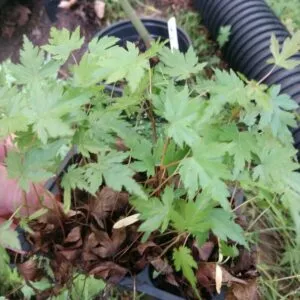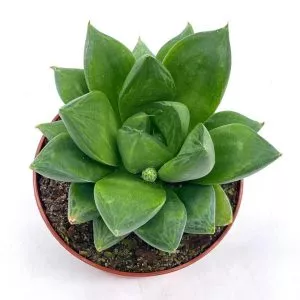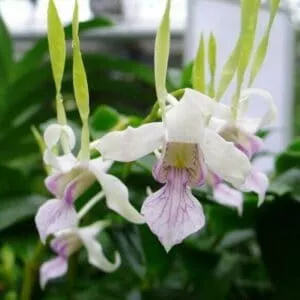No products in the cart.
Table of Contents
Is your houseplant collection not fulfilling your caregiver’s needs, but you do not want to take care of a pet? Or perhaps you have these hidden dark-siding indoor carnivorous plants.
So, instead of the typical houseplant goop-friendly diet with sunshine and water, you can say bog dwellers are like a pet living on bugs.
So they can become your pet. The only difference is they will not escape like a pet snake. Yikes!
Best Carnivorous Plants For Your Indoor Garden
Yes, most bog dwellers are creepy but did you know they make for the best houseplants? Think of the Little Shop of Horrors where the venus flytrap goes for a walk while you sleep. It might sound creepy, but these are not human-swallowing plants as they are fascinating, beautiful, and entertaining.
Venus flytrap ( Dionaea muscipula )

Yes, thinking of plants that enjoy eating flesh does not come to your mind, right? Well-known carnivorous plants indoors are the venus flytrap. The indoor plants have sensitive trigger hairs in the leaves that snap shut. It does it in less than a second when insects land on the hairs.
Once those bugs get locked inside, they become food with the help of special digestive enzymes. It makes me think back to school as we had one in the class, and we could look at this plant for hours as it eats flies and more.
The best part is the venus fly trap is easy to take care of as long as they are in a humid environment. Another great thing is that if your home does not have bugs, it helps to get some bloodworms or fish food placed on the leaves using tweezers.
The fact is that this plant is one of the most famous plants with hinged leaves shaped like a coin purse clamping shut. The plant lures bugs with sweet-smelling nectar and is lined with teeth fibers triggering an electric charge when touched.
Once bugs are digested, the trap opens up, but it can take up to a week. Another helpful tip when feeding your bog dwellers is to tickle the hairs using a toothpick, as it helps stimulate the movement of an insect.
Pitcher Plants or Monkey Cups ( Nepenthes spp)

The tropical pitcher plant is another carnivorous plant with captivating purple, yellow, and pink colors. These species have upright tubular leaves, and the insect lands and fall into the leaves, becoming its next meal. Out of the lot, the purple pitcher plant is an eye-catcher in a living space.
It is one of the best carnivorous indoor plants with interesting tube-like pitches to look at. But these plants need bright light, and you may need to supplement them using grow lights. Neither is a terrarium ideal for this plant.
The carnivorous houseplants attract insects with sweet-smelling nectar to lure them inside the execution pits. Once inside, they become the next meal and cannot escape. Still, it is a slow and painful death, but these plants do not have a huge appetite, and one insect a month is enough.
Another thing is that many carnivorous plants like the pitcher needs different lighting conditions. Some prefer a lot of sunlight; you can place them at the window in warm temperatures.
Trumpet Pitcher Plants ( Sarracenia )

Other carnivorous plants like the trumpet pitcher is other attractive houseplants with a white-top pitcher comprising slender green leaves with white cups and red veins with frilly tips.
When insects fall into the cups with the nectar, they become paralyzed and digested. The average size of the trumpet pitcher is 36 inches tall and very colorful to look at. The carnivorous houseplant prefers full sun with soil like sphagnum moss, grit, and leaf mold.
It is also recommended to water it with distilled water if no rainwater is available.
Butterwort ( Pinguicula )

Okay, we agree the butterwort might not look like a carnivorous plant, but it is. You find them growing outside in the southeastern US, and you can find wide varieties of these fleshy flowering plants.
The butterwort has a sticky substance on the outer leaves to catch prey, like polishing off gnats. But if you grow it indoors, you might need to provide it with a supplement feed. This plant thrives in bright indirect light for care tips, and the roots must not remain wet.
It is a small plant with little space with yellowish-green leaves; in spring, you see pink, purple, white, or yellow flowers. One thing is sure it does have a more serene look than the other carnivorous plants on the list.
Sundews ( Drosera )

Another very low-maintenance murderer that tempts its victims with sweet nectar is the sundews. It has sticky flypaper substances on the leaves catching insects. These plants thrive on mosquito larvae and mosquitoes. Once they are on those leaves, they are stuck.
The plant coils close around the bug and suffocate it making it an insect slayer. The sundew prefers a sunny windowsill but can handle some part shade, but it needs to be moist and humid. You can give your indoor carnivorous plants a snack every two to three weeks.
Another notable tip is that these plants vine as they grow indoors, providing space to spread those leaves or place them in hanging baskets.
Bladderworts ( Utricularia )

Another plant you might not think enjoys trapping insects like the venus flytrap is bladderworts. Now, if you want an undercover assassin, these are carnivorous houseplants.
On the foliage are tiny bladder traps that remain hidden underneath the soil. Once it detects a tiny organism, it snaps shut in seconds. So, no poking around in the ground to test the moisture. It is one of the best carnivorous houseplants that you receive small, and it remains that way.
Another helpful thing is they flourish in the shade, and the Cape sundew is ideal for a small apartment that does not always get bright light.
Australian Pitcher Plant (Cephalotus follicularis)

Another pitcher plant known as a flycatcher is the Australian pitcher plant with carnivorous leaves. It grows small green pitchers protected with red-white leaf hairs on the lid. When the pitcher door opens, you see red rings producing sweet nectar and luring insects.
On the inside, two glands form digestive juices breaking down the insect’s flesh. The plant enjoys warm temperatures with partial sun and moist soil. Another special thing about this plant is that it grows well in an aquarium with humidity and warmth.
Carnivorous Plants Care Guide
The key to raising your bug blotter is to provide them with their natural habitat to grow strong. The carnivorous plant thrives in damp crappy soil with not many nutrients. Why? These swamp dwellers trap insects to provide them with the nutrients they need.
Potting Mix for Carnivorous Houseplants

Carnivorous plants are natural swamp dwellers and prefer moist soil but must be well-draining. Whether you have venus flytraps or pitcher plants indoors, please provide them with horticultural sand mixed with sphagnum moss. The soil will help retain moisture and give the acidic levels your plant roots need.
You can also add some lava rock to provide ample drainage as well.
Light and Temperature for Your Indoor Carnivorous Plants

One thing your venus flytraps to other carnivorous houseplants love is direct sunlight at a south-facing window. You can even place them on a balcony or patio to receive their essential nutrients and natural light. But we recommend protecting your plant from drafts, dry air, or hot air.
The carnivores also go dormant in winter, except for some sundew varieties.
Watering Your Houseplant Collection
Watering your flesh-eating plants helps keep the pot in a saucer filled with distilled and not tap water. Doing this helps prevent the roots from drying out, as it is essential. Also, most flesh eaters do well in terrariums as they thrive in high humidity, depending on their lighting needs.
Feeding Your Carnivorous Houseplant

Now for the best and fun part: feeding your best carnivorous houseplants that grow indoors with insects like fruit flies or get a jar of bloodworms from your local pet store. Also, do not feed your flesh-eating plant more than one insect weekly.
These plants do not need fertilizer as it receives all their vitamins when they digest insects.
Propagation of Carnivorous Houseplants
You might think you cannot propagate the bug flesh eater, but you can, according to Carnivorous Plants Org. With them, you will find detailed instructions for propagation. There are seed germination guides and leaves cutting/pulling propagation to division.
Click here for more information.
Carnivorous Plant Disease and Pests
Okay, while these carnivores enjoy insects to small frogs, they can become the home to pests like mealybugs and fungus gnat larvae.
Furthermore, swamp dweller parents found that fungus gnat larvae are not a good source of nutrients for their babies.
The gnats eat the roots and damage leaves. Other issues are rhizome rot when stressed or not provided with the best environment to live in.
Frequently Asked Questions
While the plant can survive through nutrients in the leaves and roots, they need a diet of insects to flourish. Thus, it is essential when your swamp dweller lives indoors to provide it with some insects.
You can find three species to keep in the home to eat mosquitoes. They are the venus flytrap, pitcher plant, and common bladderwort.
Many plant parents say that the venus flytraps are the most effective, but we feel that all of the above make excellent additions to any houseplant collection. As long as you provide bright sunlight with small insects, they are happy.
You can find these spectacular species at some local garden centers. Or you can browse through the Plantly collection to choose one for your living space.
Whether you want to buy, sell or simply reach out to other plant enthusiasts, Plantly is the right place to be!
-
Free Shipping$12.00Sold By: D&D simplicity products
In stock
Baby Sun Rose / Aptenia Cordifolia
Sold By: D&D simplicity products -
$24.95Sold By: Willows Bonsai
In stock
6 pack Green Japanese Maple Pre Bonsai
Only 6 available and it’s in 1 people’s basketSold By: Willows Bonsai -
$11.99Sold By: BubbleBlooms
In stock
Haworthia cymbiformis, Cathedral Widow, Rare Haworthia, 3 inch pot, well rooted
Rated 4.81 out of 5 based on 279 customer ratings00Sold By: BubbleBlooms -
Free Shipping$39.99Sold By: Aloha Hawaii Orchids
$44.99In stock
Orchid Dendrobium Antennatum live plants Antelope New Guinea Spikes | Fragrant Scent From Hawaii
Only 3 available and it’s in 1 people’s basketRated 4.65 out of 5 based on 268 customer ratings00Sold By: Aloha Hawaii Orchids






